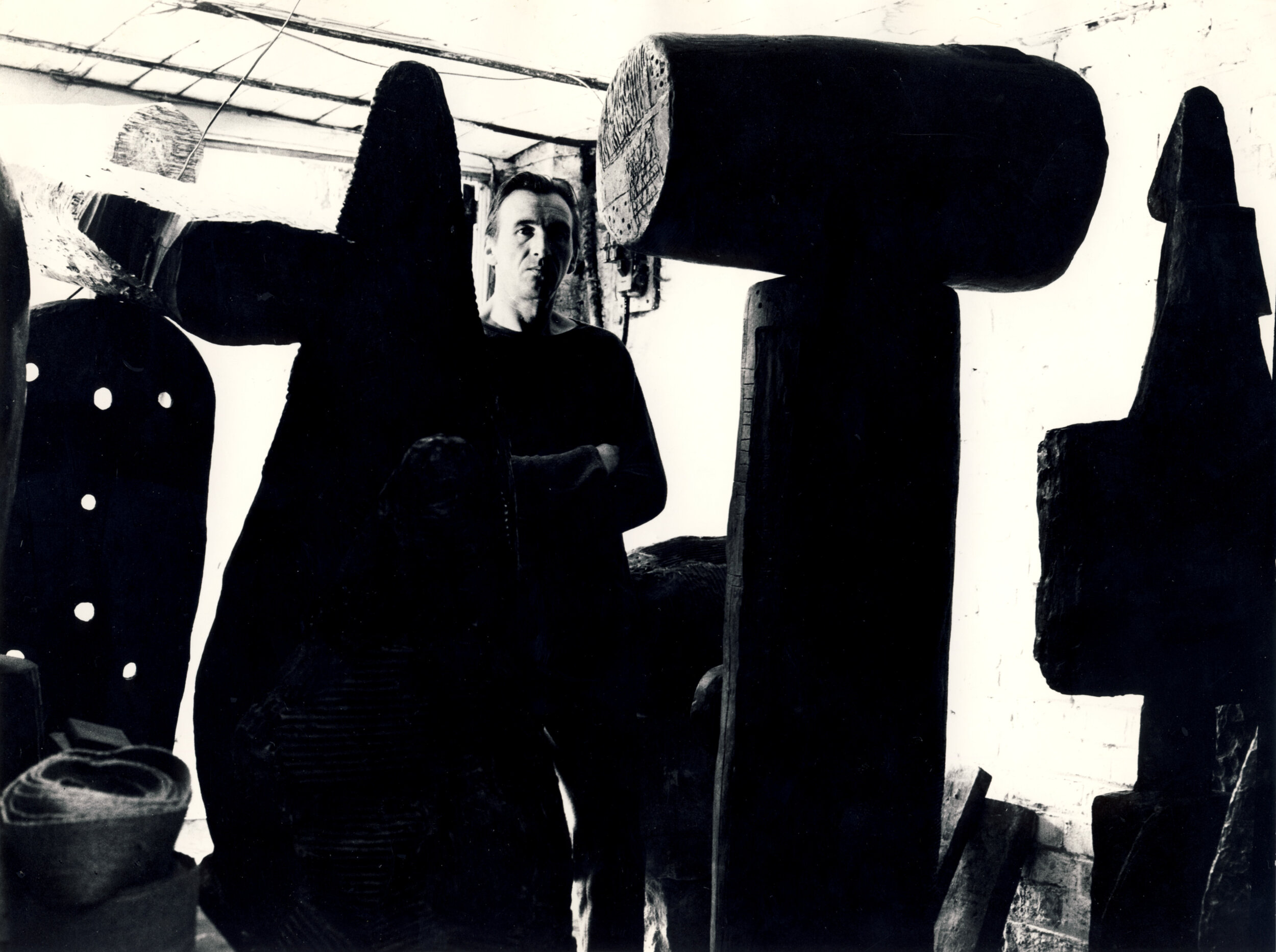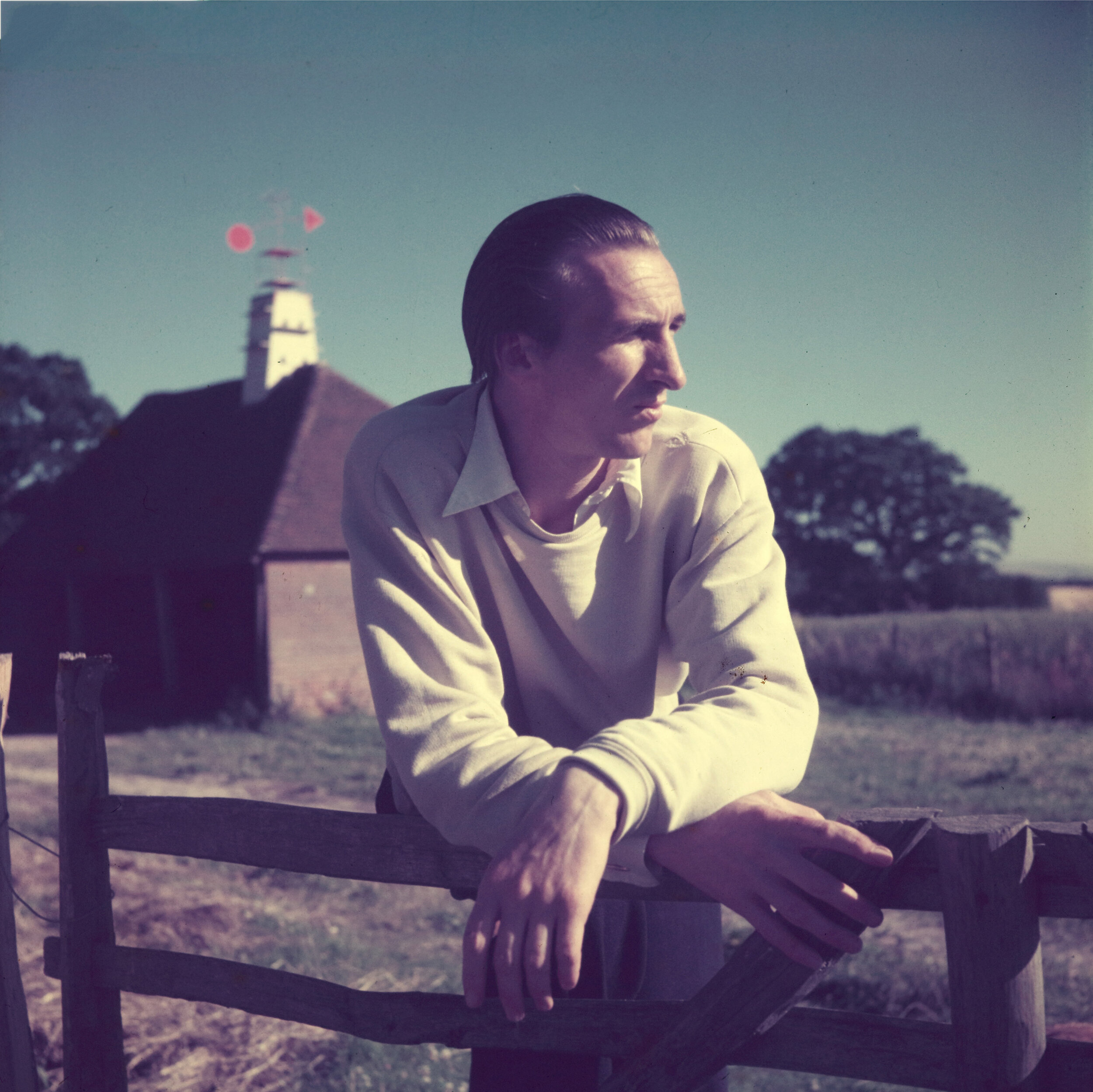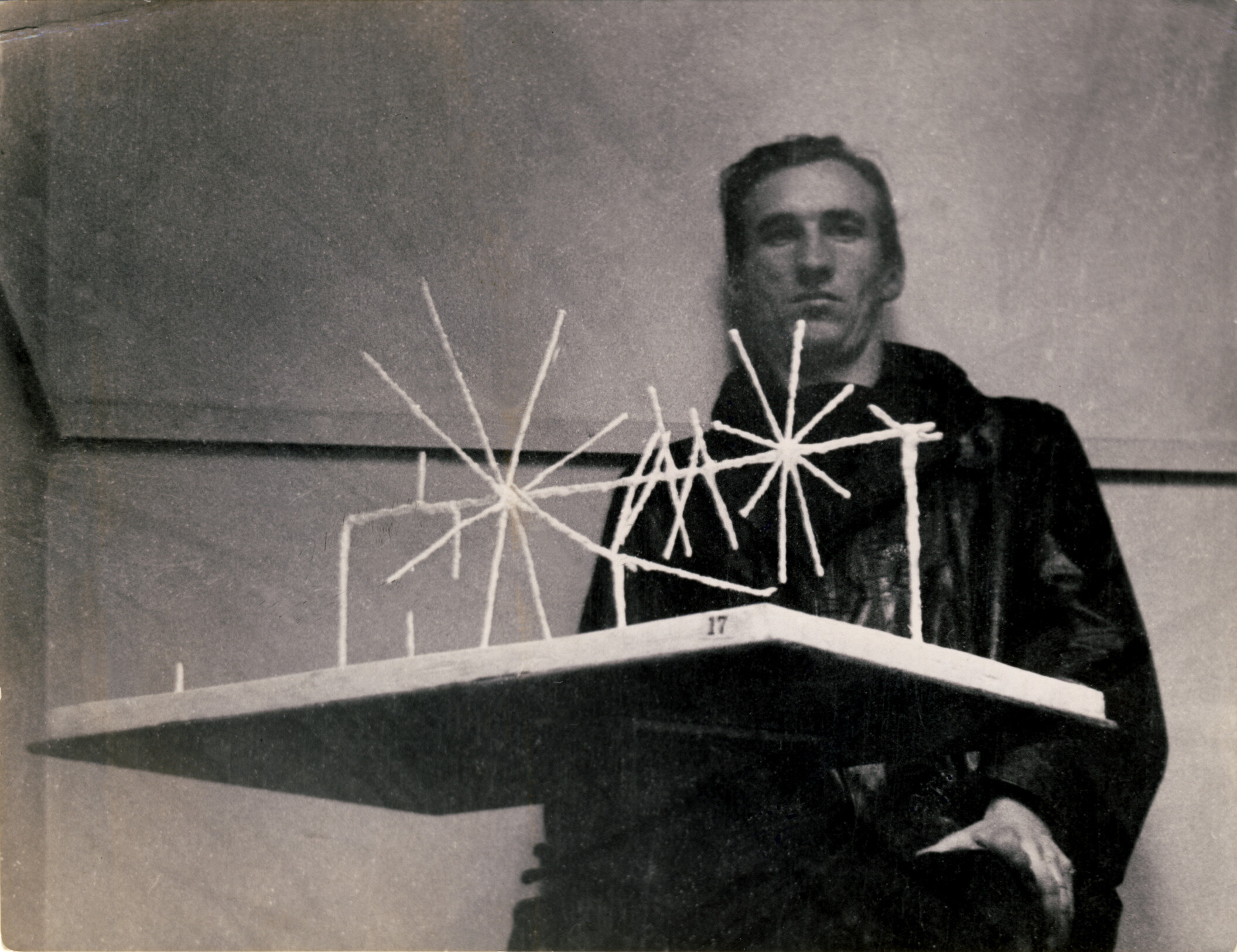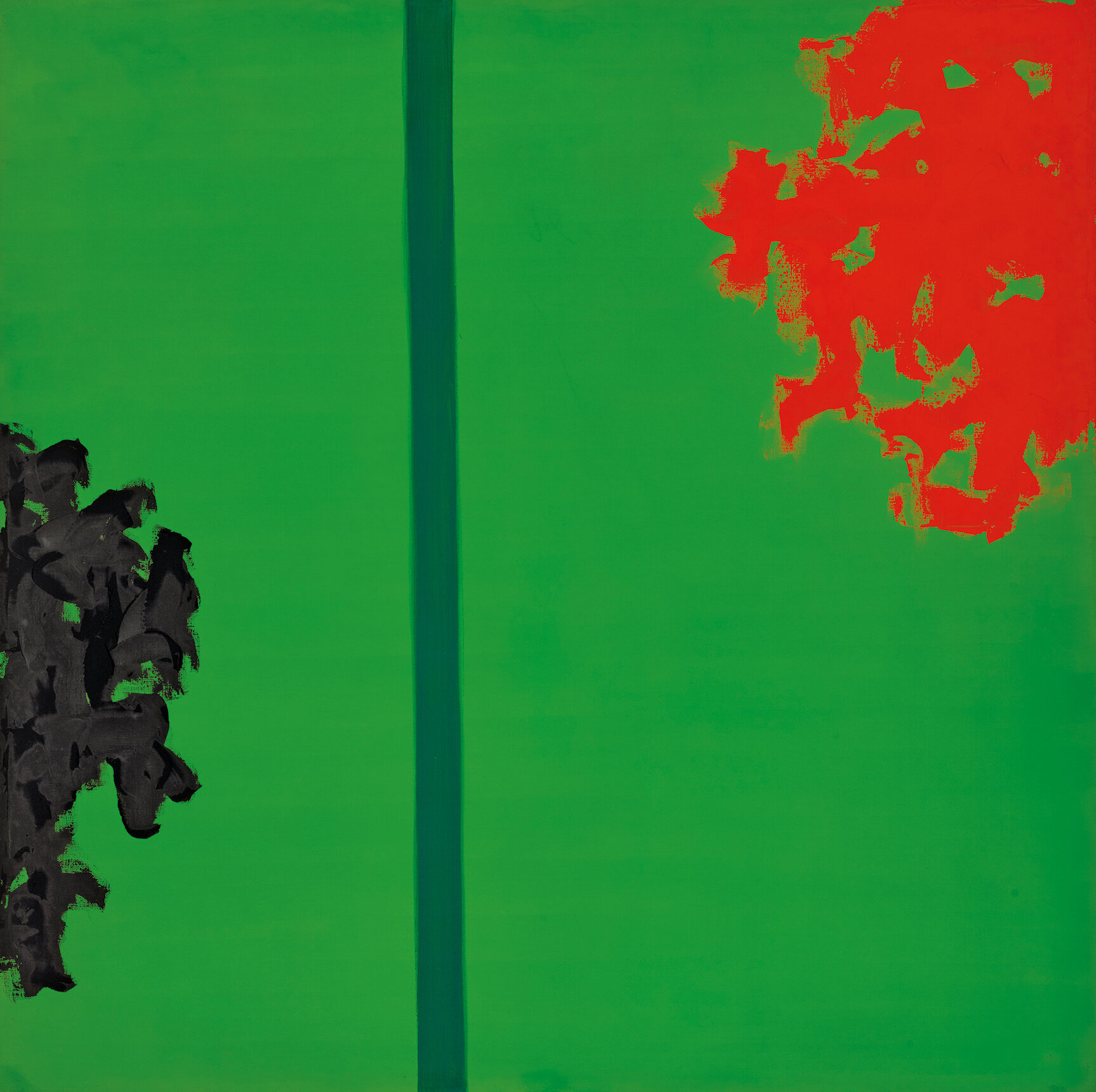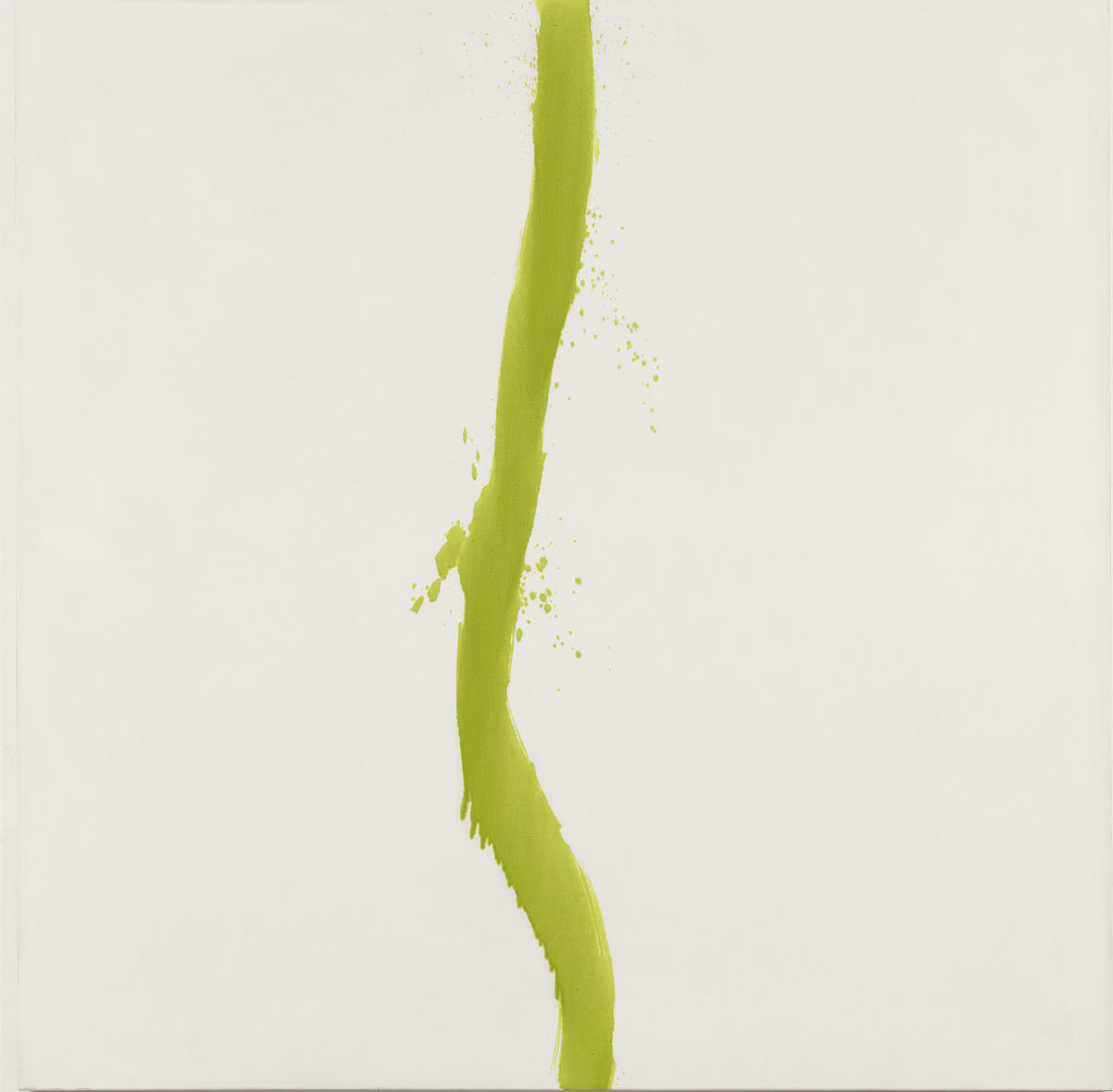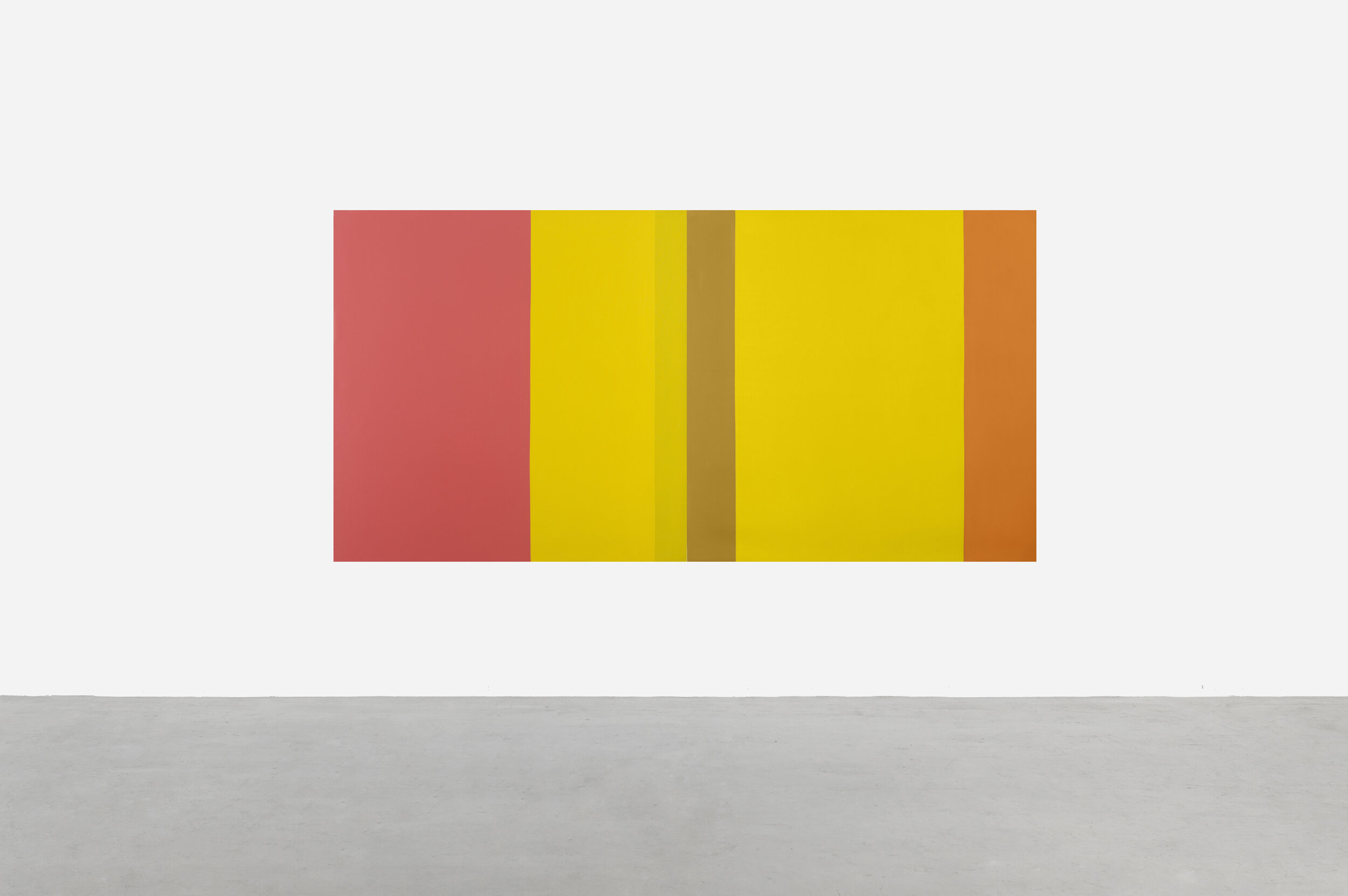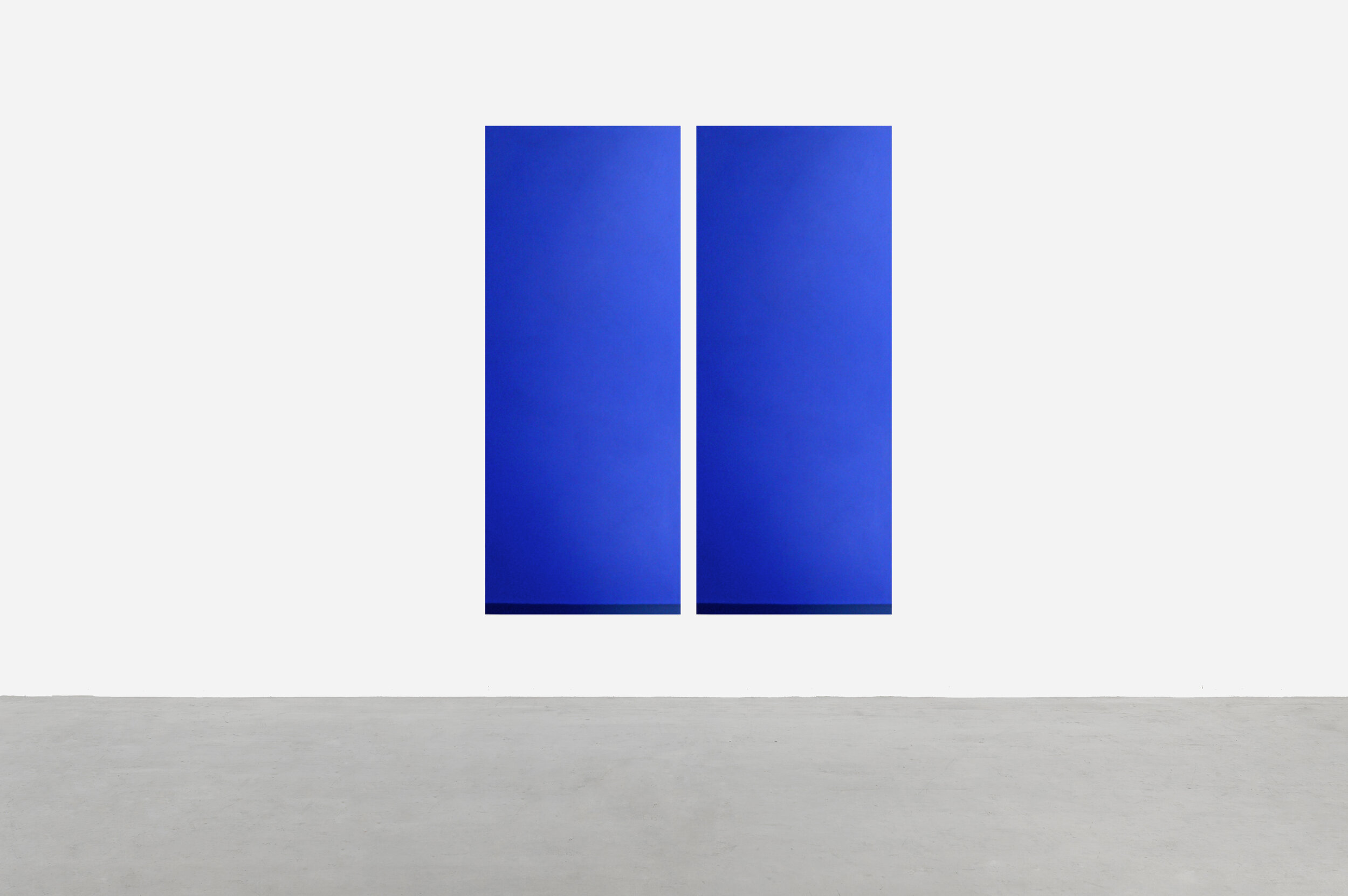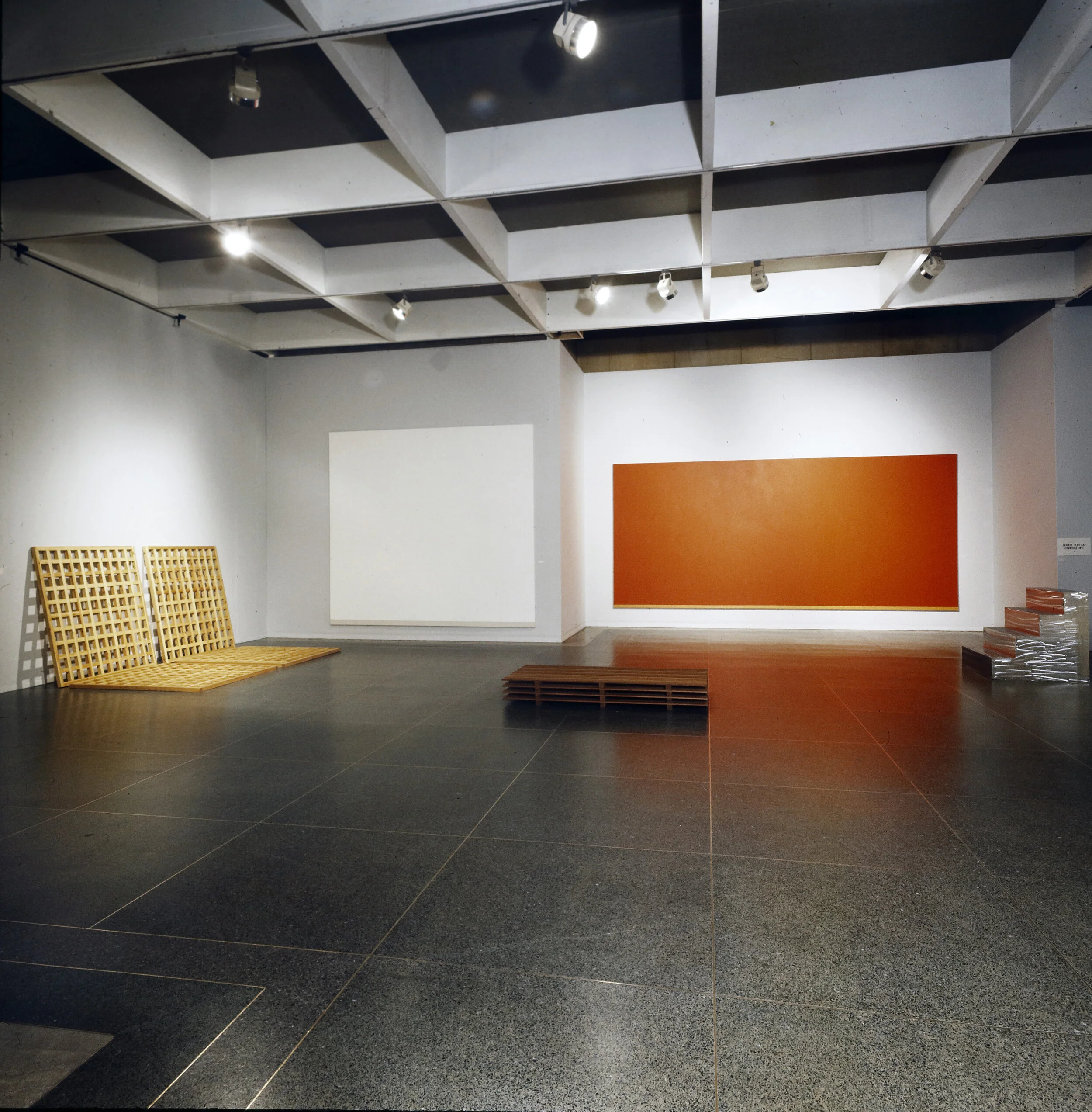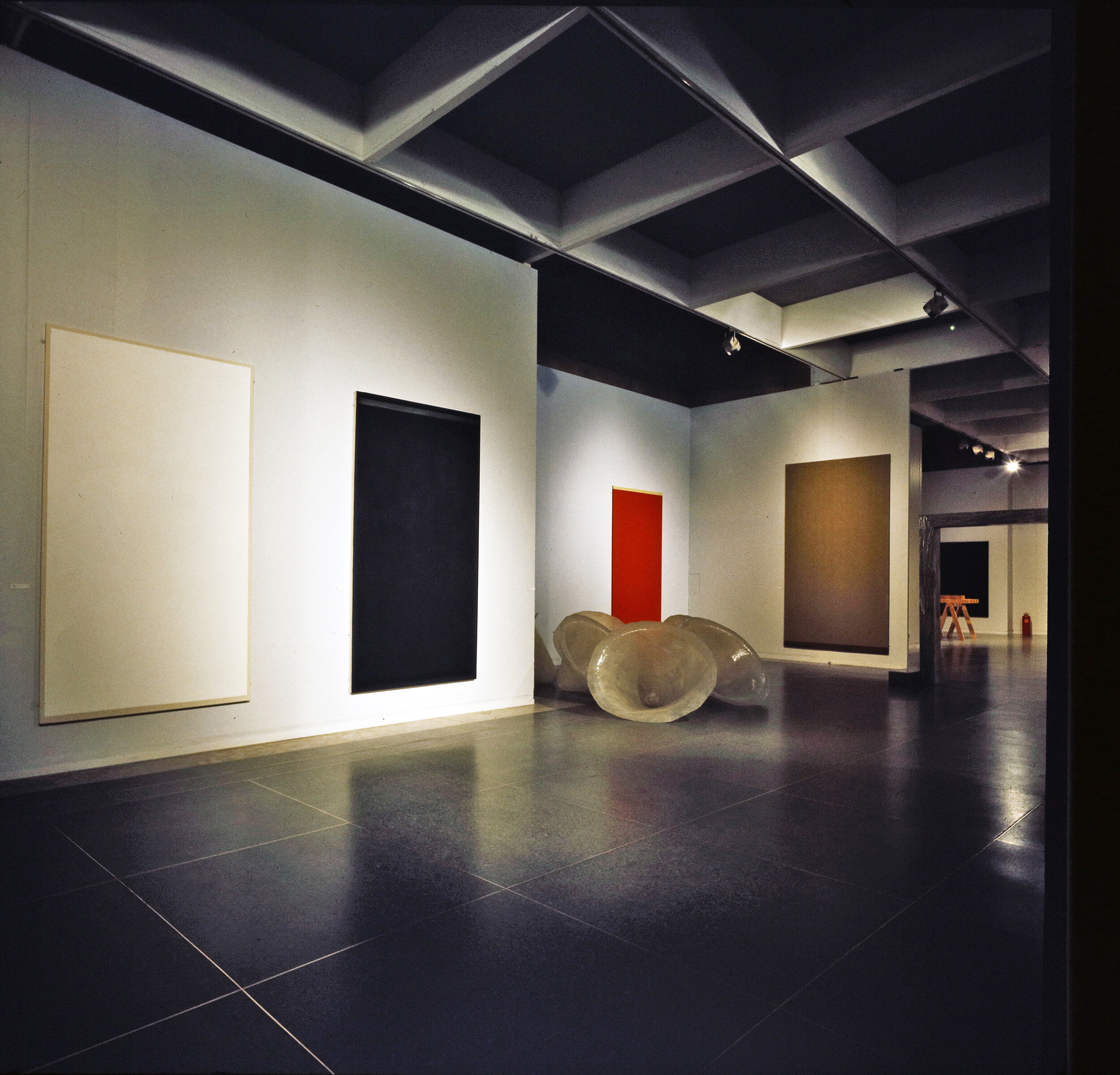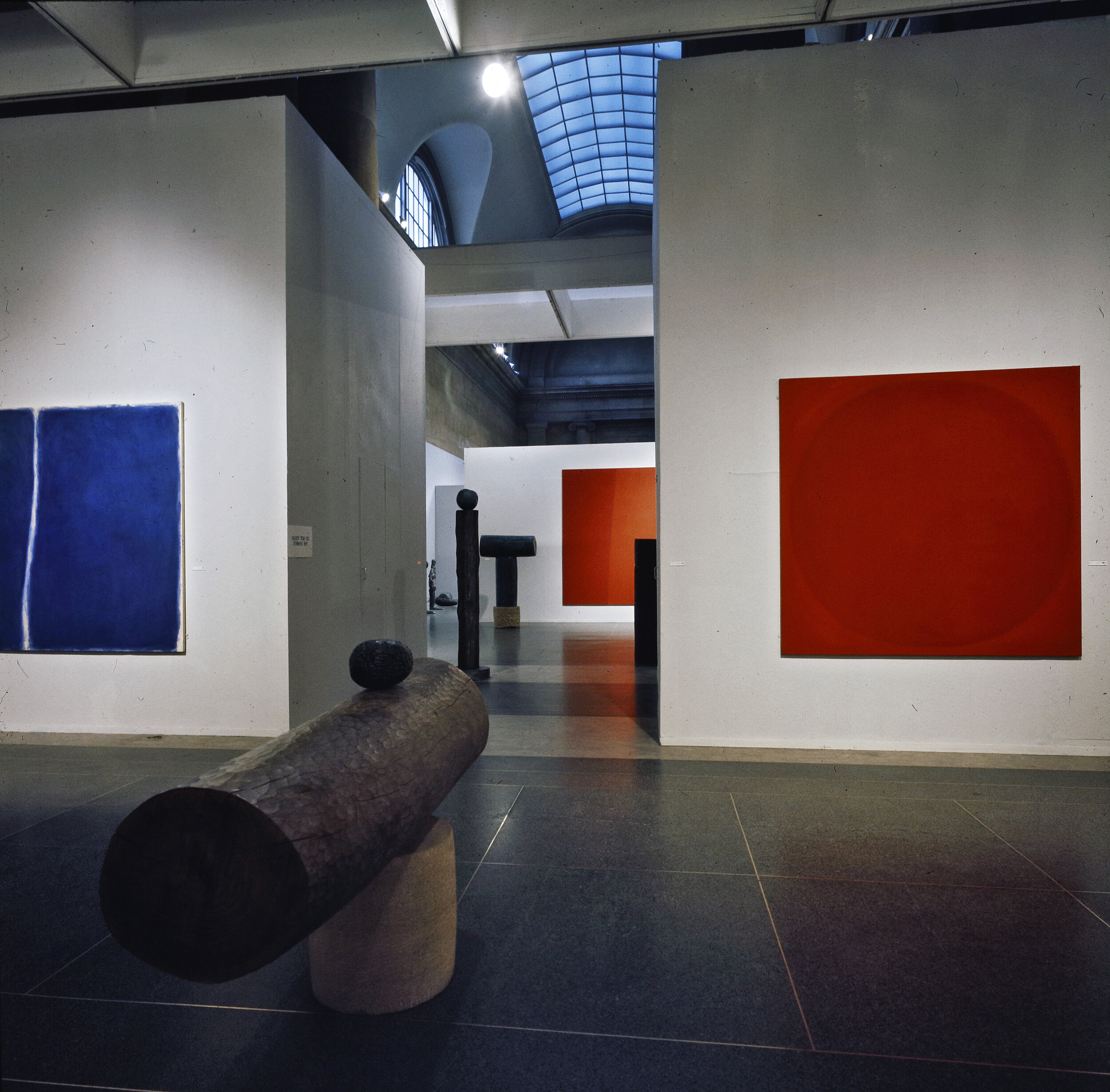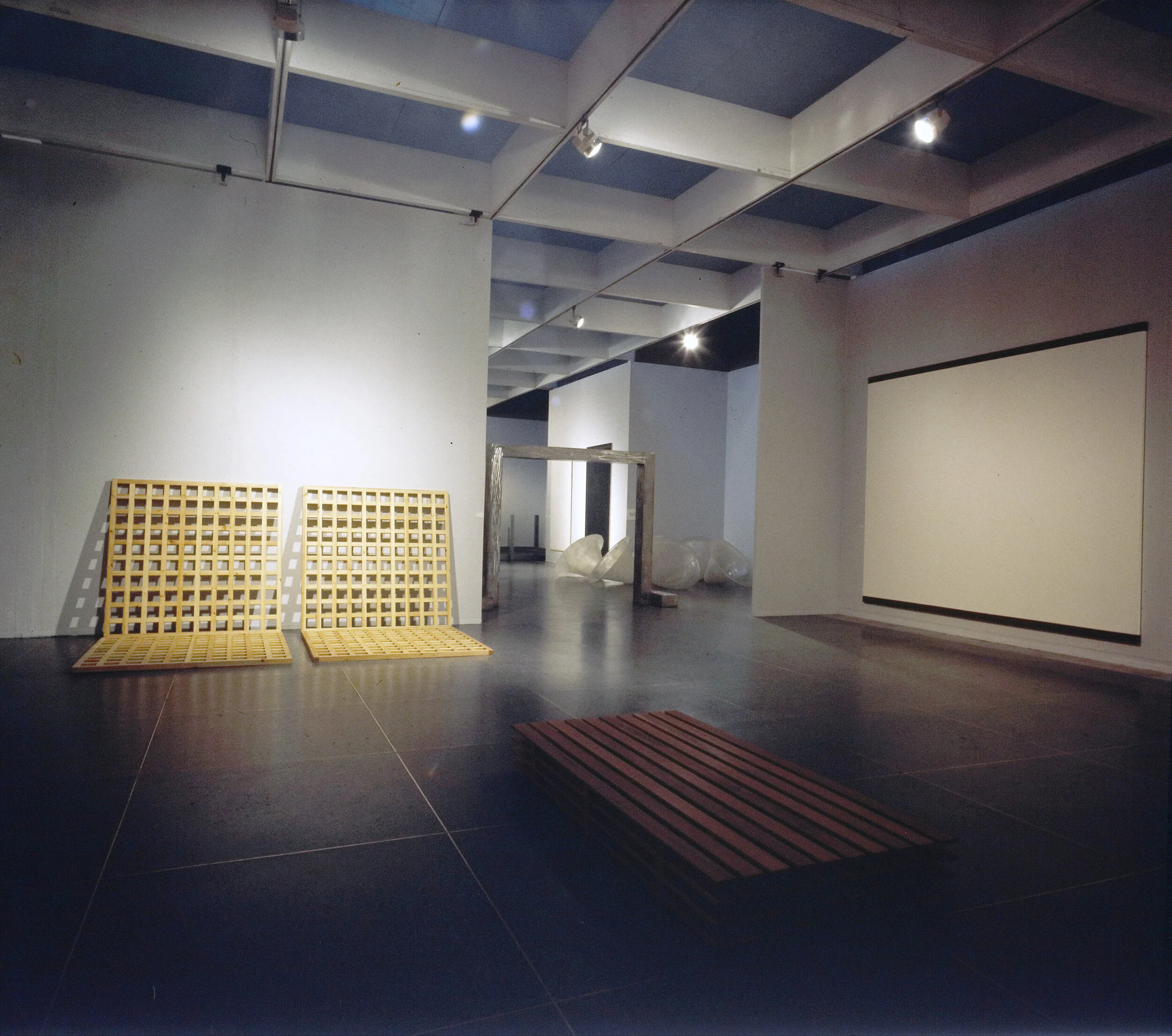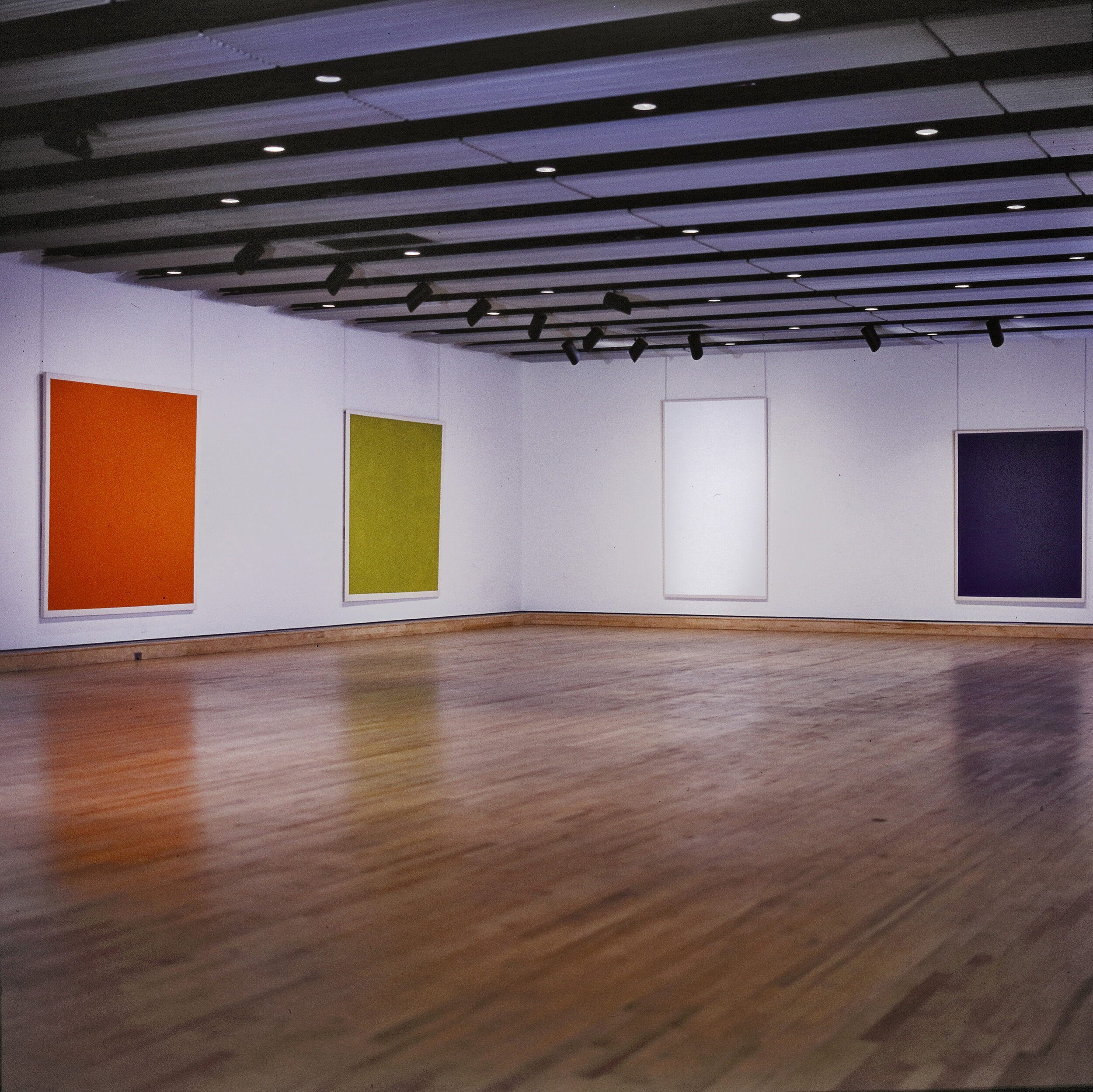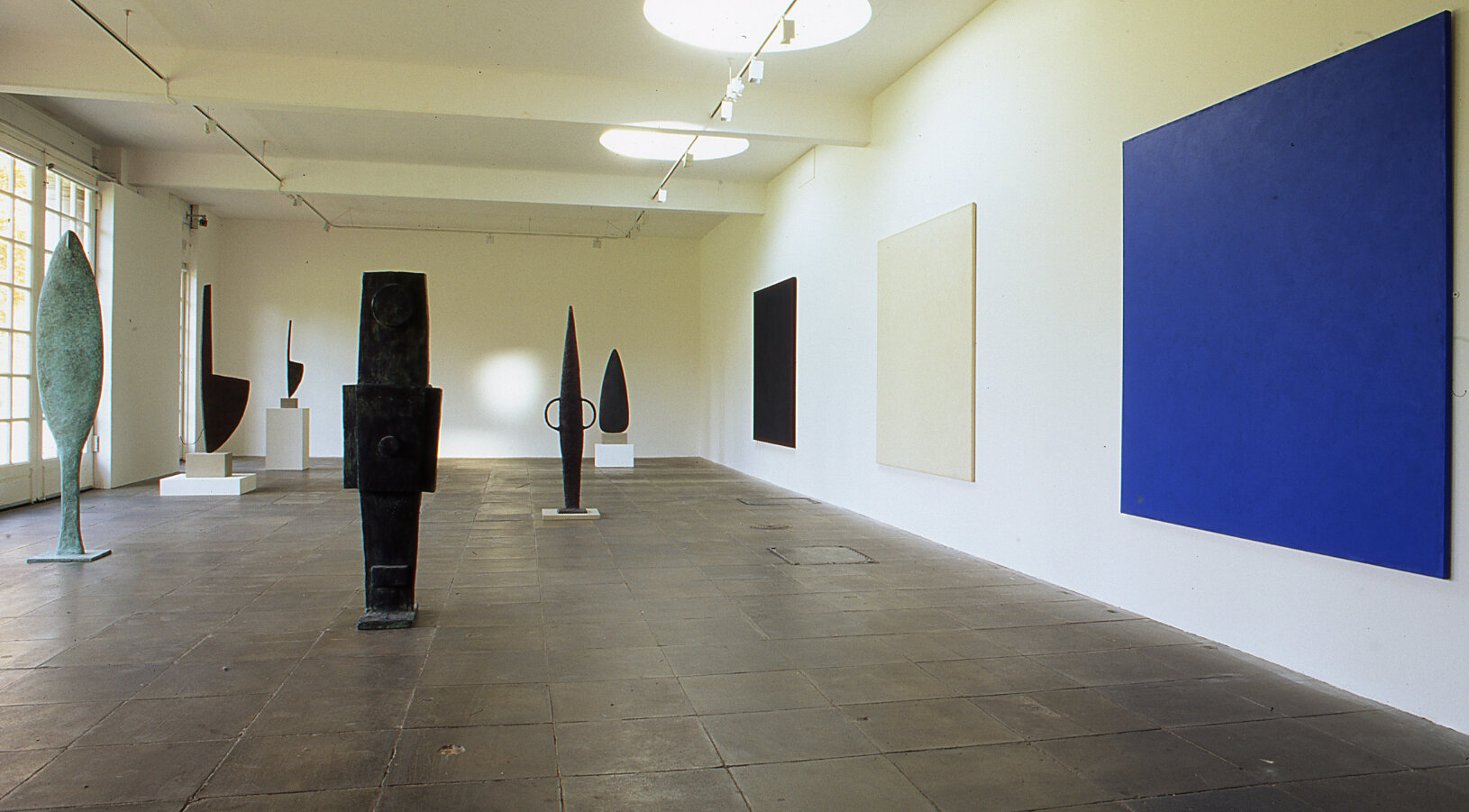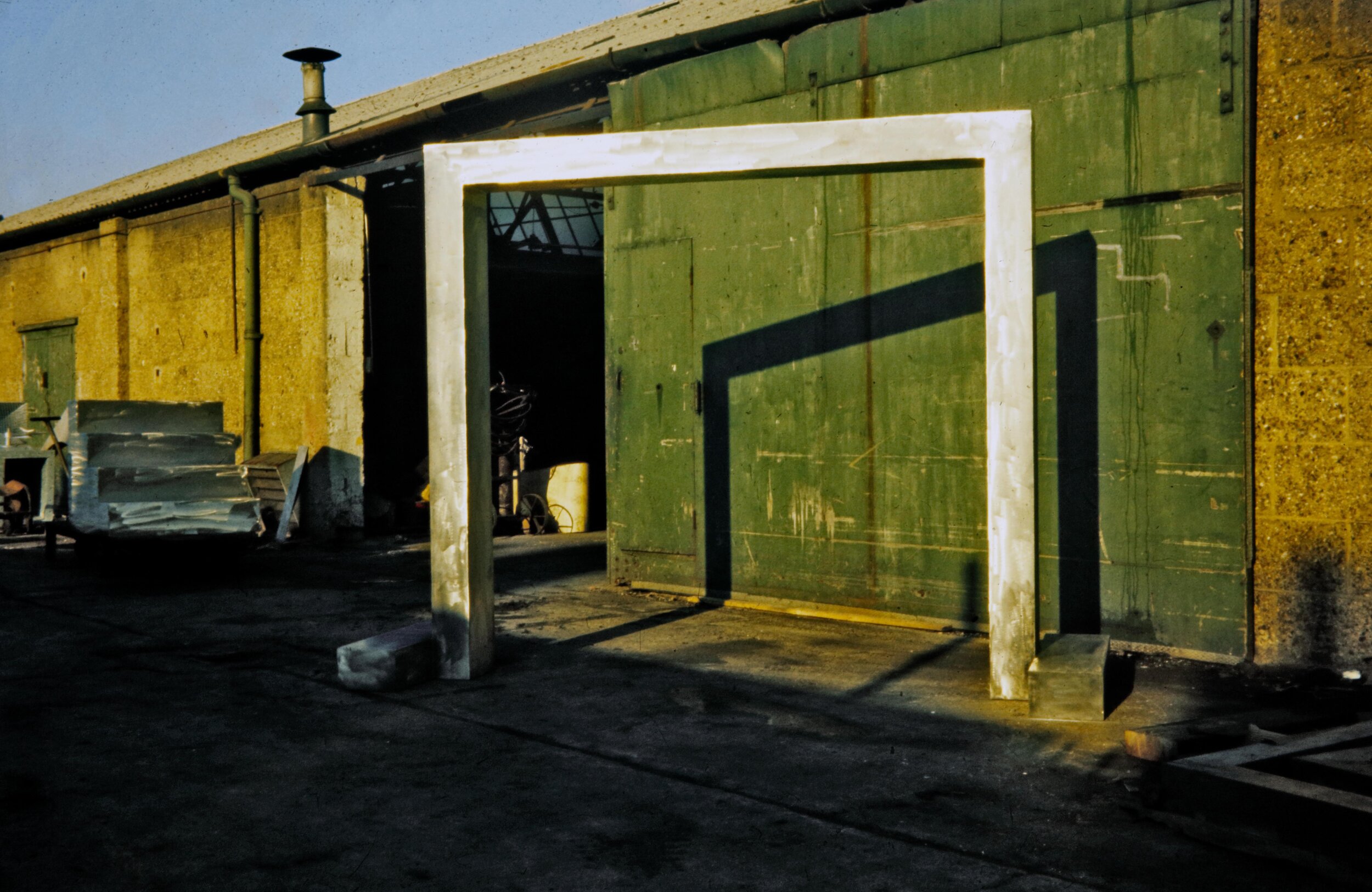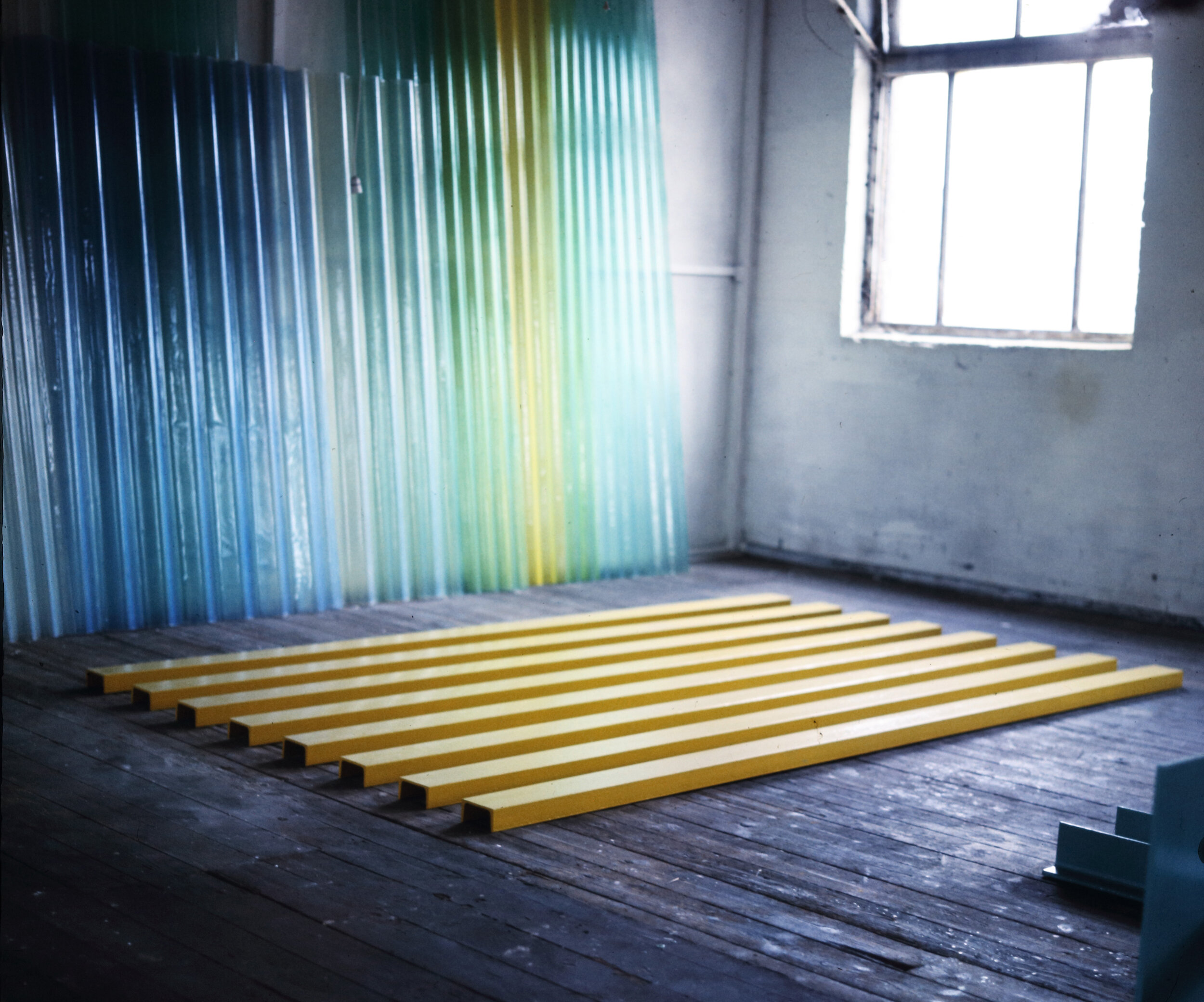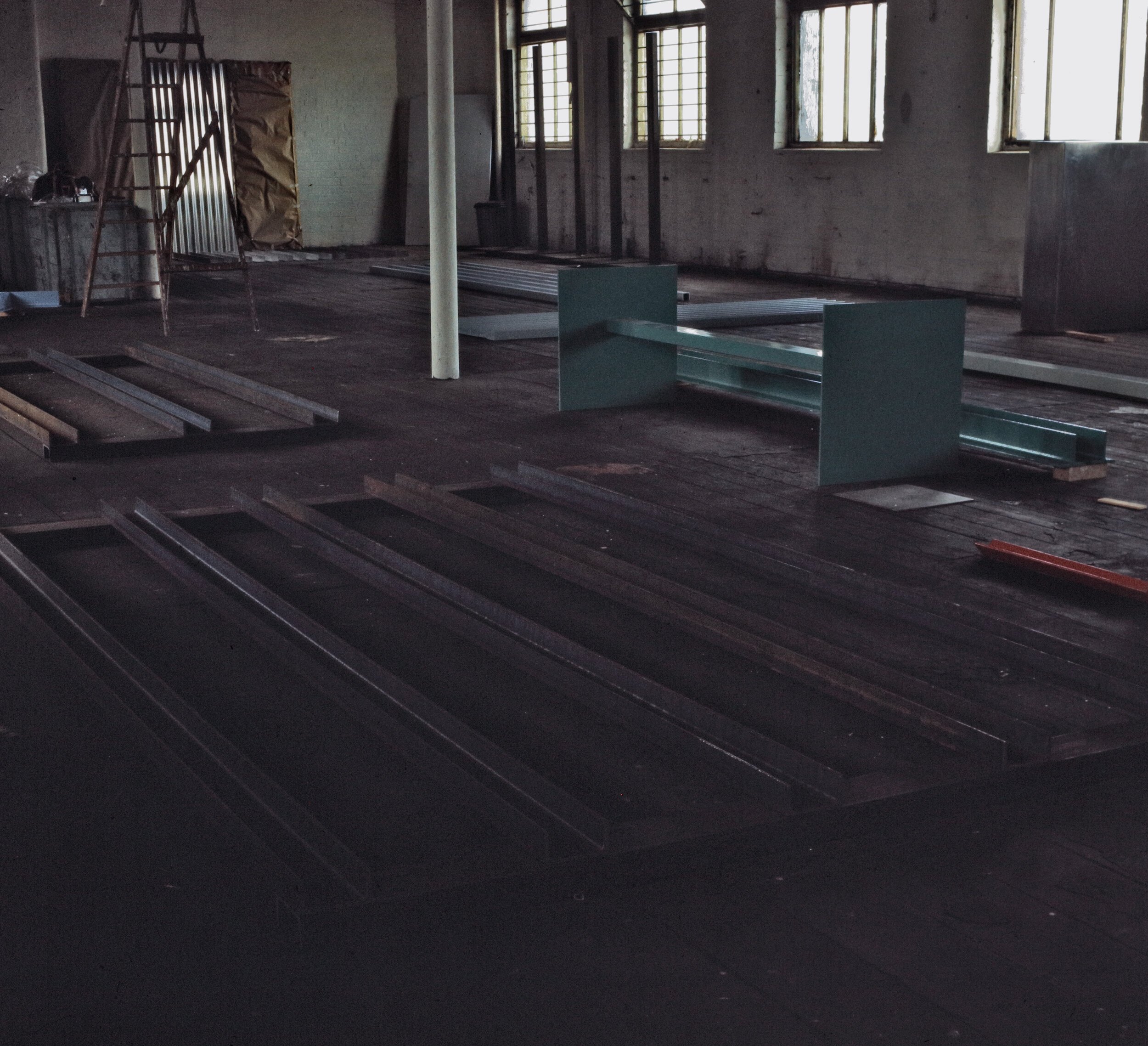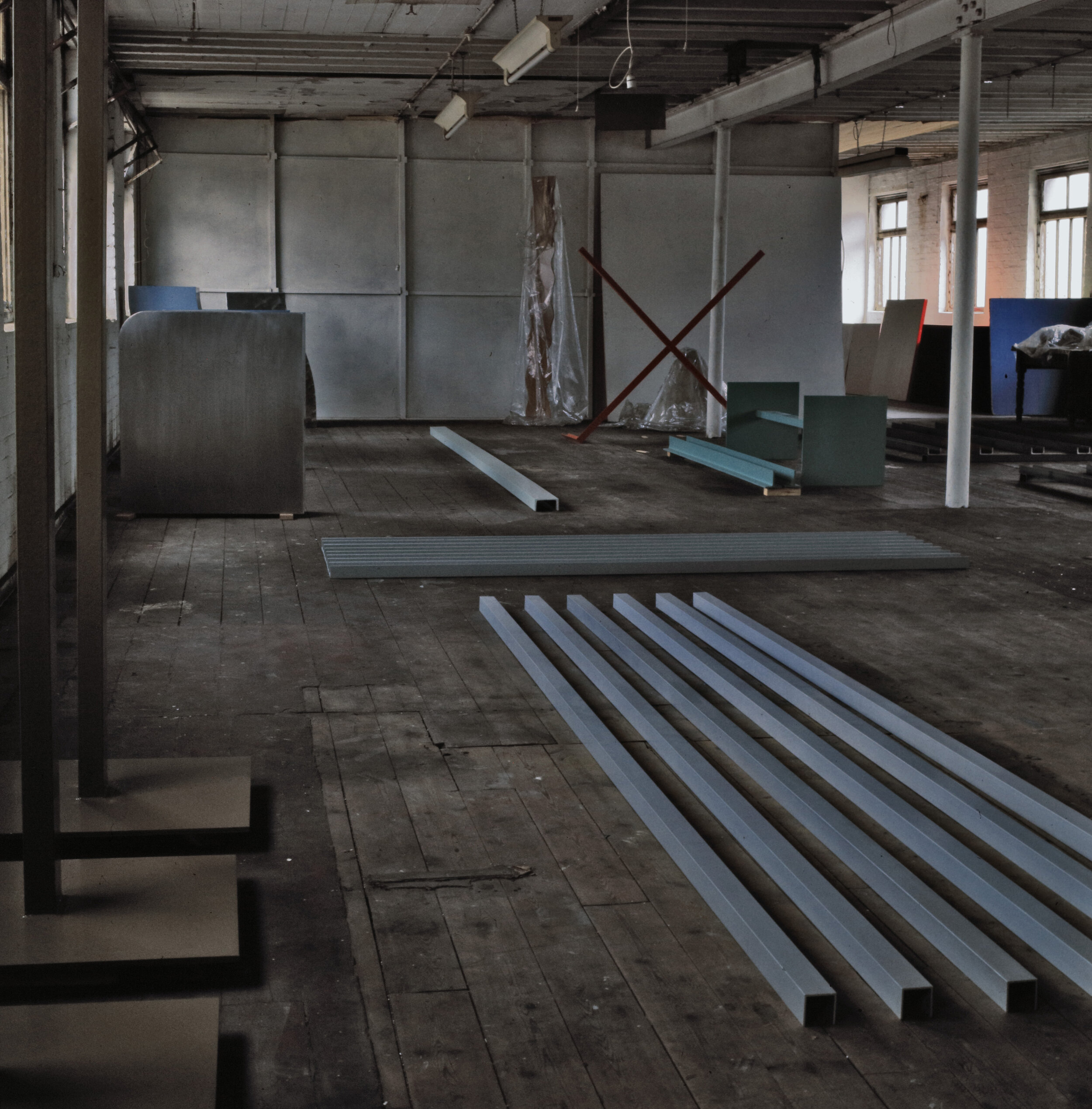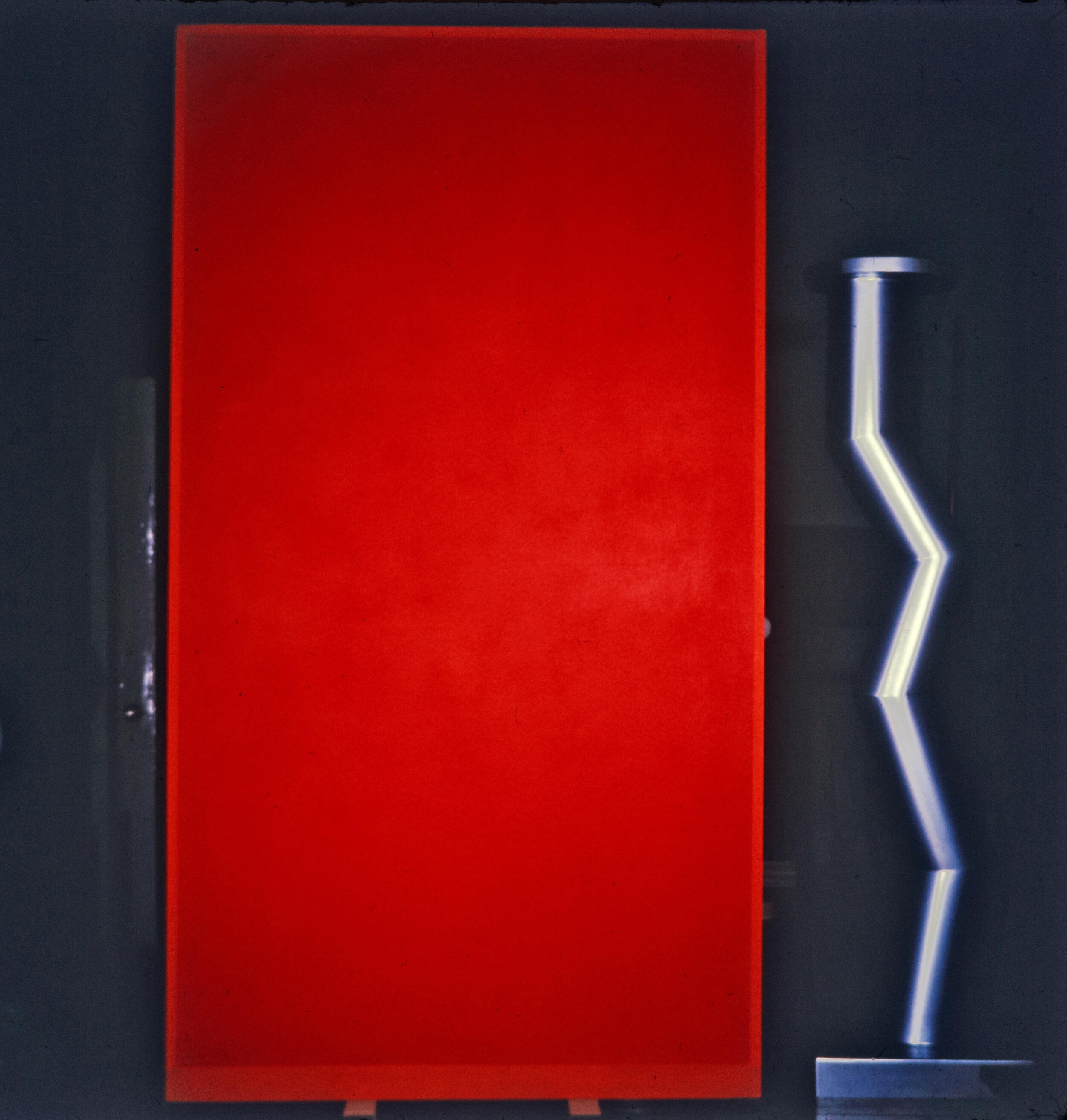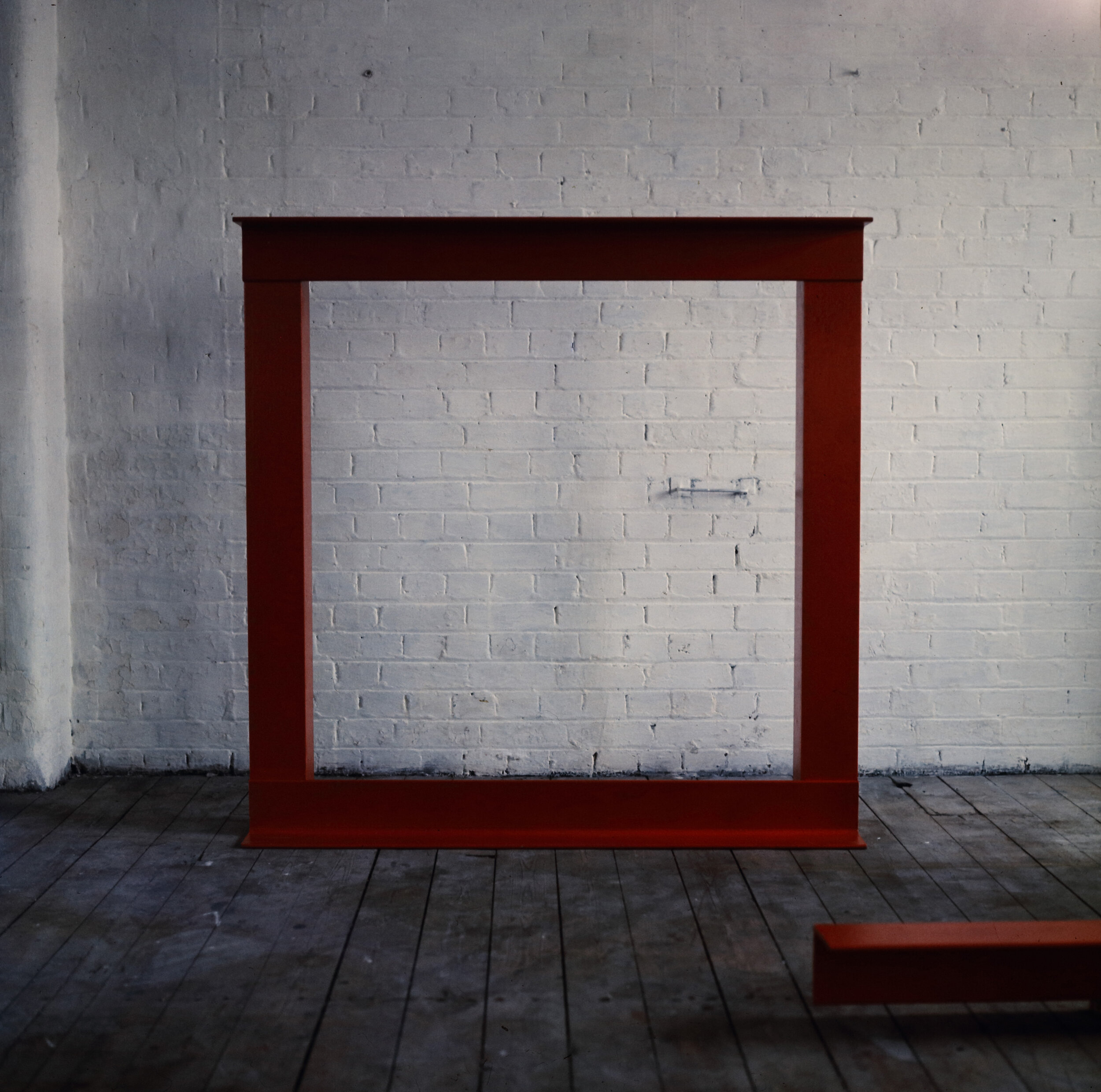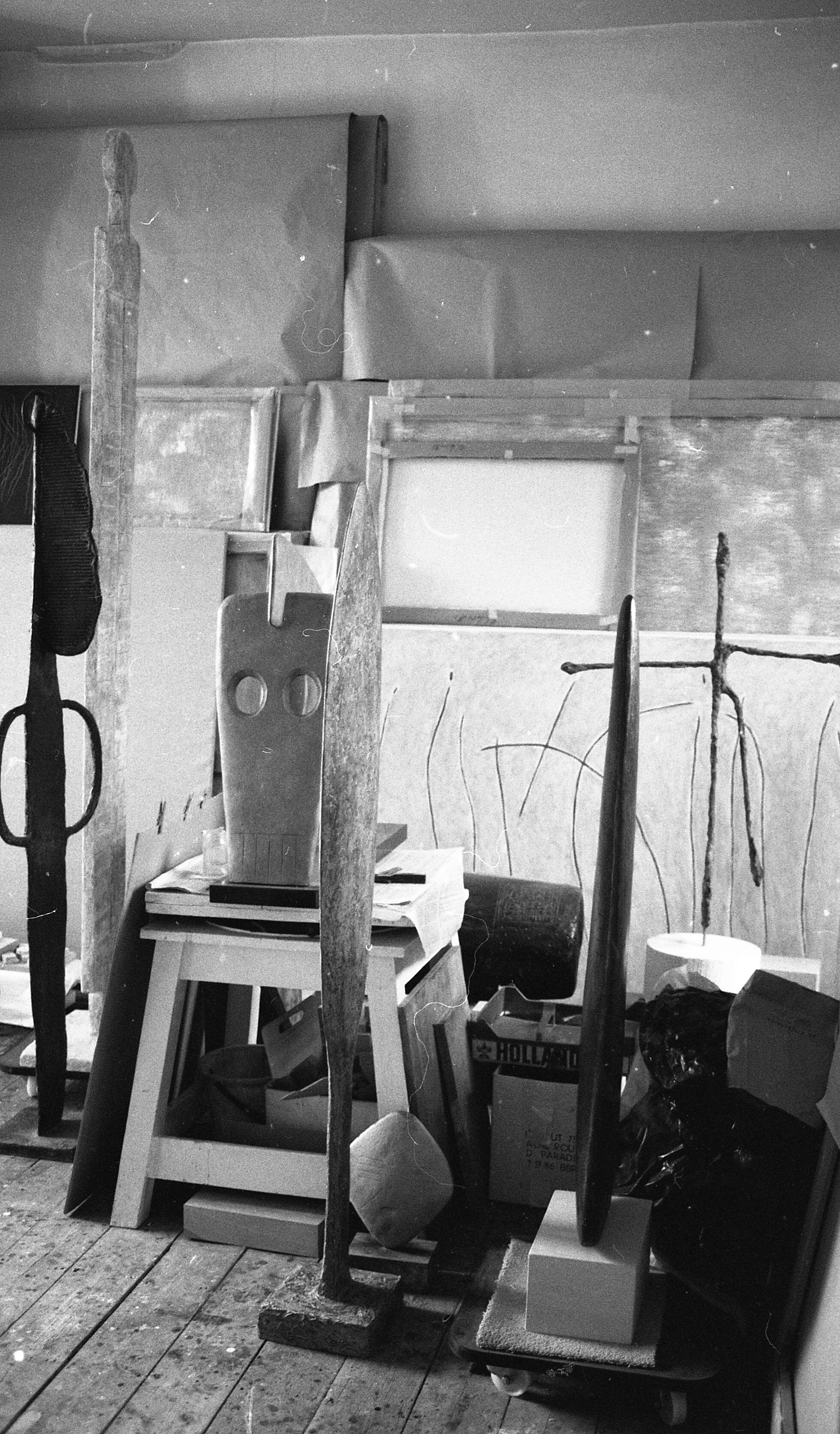William Turnbull (1922-2012)
Biography
William Turnbull’s work resonates across cultural, geographical and historical divides and evades neat classification. His work would be equally at home in a museum of ancient artefacts as in a museum of contemporary art. […] While habitually linked with the ‘Geometry of Fear’ – a group of British sculptors…who rose to international prominence in the 1950s in the wake of Henry Moore and Barbara Hepworth – his work has a seriousness of purpose and depth of thought that marks it apart. He connects with just about every art group of the period, but at the same time was allied to none. This independent streak is a key characteristic of his life and work.
Turnbull was born in January 1922 in Dundee, the son of a shipyard engineer. He left school at 15, but attended evening art classes. One of his teachers spotted his talent and got him a job as an illustrator for the Dundee-based publishing house DC Thompson. He joined the RAF in 1941, training in Canada and flying in India and Ceylon (modern day Sri Lanka). […] Turning down a lucrative invitation to become a full-time commercial pilot, in 1946 he enrolled in the painting department at the Slade School of Fine Art in London. After a few weeks, he moved to the sculpture department where he met Paolozzi, who became a close friend.
Turnbull visited Paris in 1947 and moved there the following year. At that time, you could meet the legends of modern art without much difficulty. Turnbull knocked on Constantin Brancusi’s door and persuaded the great sculptor to let him in, spending an hour wandering about the studio. Fernand Léger welcomed him into his studio and talked at length about his work. Jean Hélion – married to Peggy Guggenheim’s daughter Pegeen – took Turnbull under his wing and invited him to parties attended by the Surrealists. […] The critic David Sylvester, who also lived in Paris, organised a join show of sculpture by Turnbull and Paolozzi at Erica Bausen’s legendary Hanover Gallery in Mayfair in February 1950. Brausen was also the dealer of Giacometti, Francis Bacon and Lucian Freud.
Short of funds, Turnbull settled in London later that year...and became involved with the recently formed Institute of Contemporary Arts. He was one of several young artists, including Richard Hamilton and the photographer Nigel Henderson, who formed the independent group, which is often seen as a point of departure for Pop Art. What singled Turnbull out was his interest in, and reinterpretation of, the powerful, simplified forms of ancient and non-western art.
Turnbull’s international reputation was established with his inclusion in the exhibition New Aspects of British Sculpture, held in the British Pavilion at the Venice Biennale in 1952. […] In the mid-1950s Turnbull formed relationships with American artists and collectors, including Mark Rothko and Barnett Newman. Alongside his sculpture, Turnbull always painted and he had separate studios for the two practices. If he had a problem or impasse with a sculpture, he would return to painting, almost paradoxically, working out the problem on a flat service, or vice versa.
In the 1950s he favoured bronze, and in the early 1960s he made a number of owrks comprised of bronze and carved wood… He wanted the materials to “speak for themselves”, an idea that originated in Japanese art. [… In 1962,] Turnbull had travelled to Cambodia, Japan and Singapore for the first time. Balance, equilibrium and gravity remained the defining features of Turnbull’s oeuvre. In the mid-1960s, that same approach was brought to other pre-manufactured materials, including steel, Perspex and fibreglass, and these remained his materials of choice through the 1970s.
His first marriage was to the concert pianist Katharina Wolpe in 1950. He married his second wife, the eminent sculptor and printmaker Kim Lim in 1960. She had come to London from Singapore to study at Saint Martin’s College of Art, and then at the Slade. Trips to the Far East with her proved inspirational for Turnbull, as his gnarled bronzes, which speak of any anxiety rooted in Parisian Existentialism, gave way to something more akin to Minimalism, rooted in an Eastern aesthetic.
In the early 1980s, Turnbull returned to the material that was his abiding love – bronze – producing works which, more than ever, connected with ancient pre-classical sculpture. An exhibition at the Serpentine Gallery in London in 1995, put Turnbull firmly back on the map (it was his first major show in a public space since his Tate Gallery retrospective in 1973).
Usually among artists of his standing, he was diffident when talking about himself, but was genuinely interested in the lives of others. […] But the idea of Turnbull as an ascetic, monk-like figure can be exaggerated. His works may connect with Cycladic and Neolithic art, but his eyes were always open to the modern world. His sons were champion skateboarders and the forms of their skateboards inspired a series of figurative works, while his great Idol bronzes of the 1950s refer in part to ancient figures of worship, but also to contemporary figures of worship: Hollywood screen idols, such as Marilyn Monroe. Turnbull navigated the distant past and the immediate present as if they were a Möbius strip, constantly turning in on each other. His art speaks of a timeless visual language.
Text: Excerpts from William Turnbull: A State of Balance by Patrick Elliott in William Turnbull: New Worlds, Words, Signs published on the occasion of an exhibition at Offer Waterman, London (2017), pp. 9-14.
Public Collections
Albright-Knox Art Gallery, Buffalo, New York, USA
Art Gallery New South Wales, Sydney, Australia
Art Gallery of Ontario, Toronto, Canada
Arts Council Collection, Hayward Gallery, London, UK
The Berardo Collection, Lisbon, Portugal
British Council, London, UK
Contemporary Art Society, London, UK
David and Alfred Smart Museum of Art, University of Chicago, USA
Franklin D. Murphy Sculpture Garden, UCLA, Los Angeles, USA
Glasgow Museum and Art Gallery, Glasgow,UK
The Government Art Collection, London, UK
Hirshhorn Museum and Sculpture Garden, Smithsonian Institution, Washington D.C., USA
Hull University Art Collection, Hull, UK
Hunterian Art Gallery, University of Glasgow, UK
Jesus College Cambridge, Cambridge, UK
Leeds Museums and Galleries, Leeds, UK
Museum of Contemporary Art, Tehran, Iran
McManus Gallery, Dundee Museum and Art Gallery, Dundee, UK
National Gallery of Art, Washington D.C., USA
Scottish National Gallery of Modern Art, Edinburgh, UK
Stanford University, Stanford, USA
Swindon Museum and Art Gallery, Swindon, UK
Tate Collection, UK
Tel Aviv Museum of Art, The Riklis Collection of the McCrory Corporation, New York, USA
University of Lethbridge Art Gallery, Lethbridge, Canada
University of Liverpool Art Collections, Liverpool, UK
Selection of Works





![5c [2] 72dpi rgb.jpg](https://images.squarespace-cdn.com/content/v1/60917f4fc6824875185da177/cc3caae2-a59a-43dc-8530-16e9d5ef4c53/5c+%5B2%5D+72dpi+rgb.jpg)


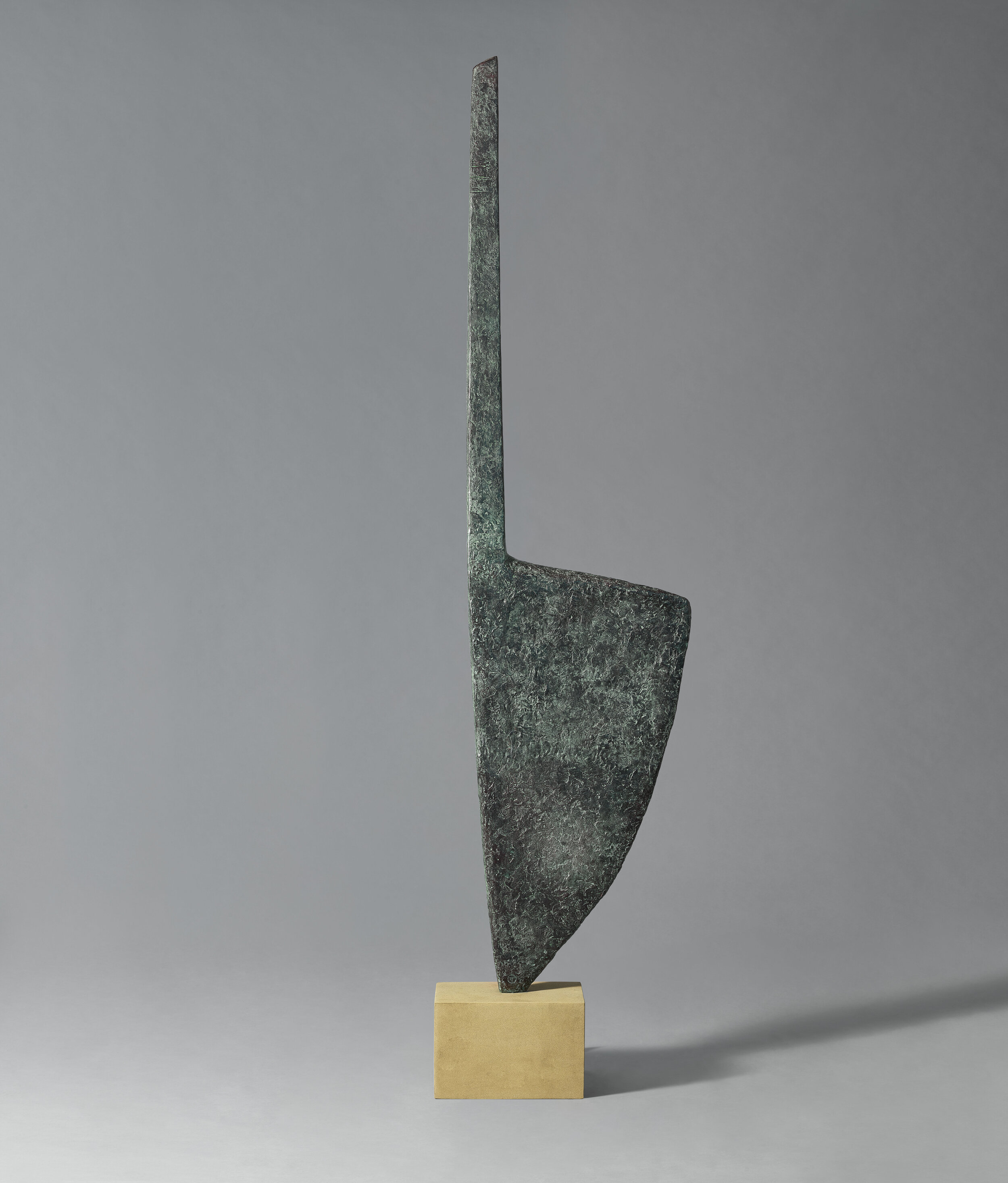








Selected Exhibitions
1950 Solo exhibition, Hanover Gallery, London
1952 Solo exhibition, Hanover Gallery, London
New Aspects of British Art, British Pavilion, XXVI Biennale, Venice
Young Sculptors, Institute of Contemporary Arts, London
1956 Contemporary Sculpture, Hanover Gallery, London
This is Tomorrow, Whitechapel Gallery, London
Yngre Brittiska Skulptorer, Gothenburg Museum (touring exhibition)
1957 Solo exhibition, Institute of Contemporary Arts, London
Ten British Sculptors Exhibition, Biennale São Paulo (touring)
1958 Contemporary British Sculpture, Arts Council of Great Britain, London (touring)
New Trends in British Art, New York-Rome Art Foundation (touring)
1959 European Art Today: 35 Painters and Sculptors, Minneapolis Institute of Arts (touring)
1960 Solo exhibition, Molton Street Gallery, London
The Mysterious Sign, Institute of Contemporary Arts, London
1961 2nd International Exhibition of Sculpture, Musée Rodin, Paris
Neue Malerei in England, Stadtisches Museum, Leverkusen, Germany
Carnegie International, Carnegie Museum of Art, Pennsylvania
Solo exhibition, Molton Street Gallery, London
1962 Hirshhorn Collection, Solomon R. Guggenheim Museum, New York
British Art Today, San Francisco Museum of Art, San Francisco (touring)
1963 Solo exhibition, Marlborough-Gerson Gallery, New York
Solo exhibition, Art Institute, Detroit
1964 Guggenheim International, Solomon R. Guggenheim Museum, New York
Painting and Sculpture of a Decade, Tate Gallery, London
1965 Solo exhibition, Benington College, Vermont
Solo exhibition, Galerie Müller, Stuttgart
British Sculpture in the Sixties, Tate Gallery, London
Signale, Kunsthalle, Basel
Drawings from the Betty Parsons Collection, New York
Sculpture from the Albert A. List Family Collection, New School Art Center, New York
1966 Solo exhibition, Pavilion Gallery, Balboa, California
New Shapes and Forms of Colour, Stedelijk Museum, Amsterdam
1967 Solo exhibition at Waddington Galleries, London
Solo exhibition, IX Bienal, São Paulo, touring to South America
Guggenheim International, Solomon R. Guggenheim Museum, New York
1968 Solo exhibition, Hayward Gallery, London
Documenta 4, Kassel, Germany
Sculpture in the City, Arts Council Gallery, London (touring)
1969 Solo exhibition, Waddington Galleries, London
1970 Solo exhibition, Waddington Galleries, London
1973 William Turnbull Retrospective, Tate Gallery, London
1974 Solo exhibition organised by Scottish Arts Council, Edinburgh
British Painting, Hayward Gallery, London
1976 The Human Clay, Hayward Gallery, London
Solo exhibition, Waddington Galleries, London
1977 British Painting: 1952 – 77, Royal Academy of Arts, London
1978 The Mechanised Image, Arts Council of Great Britain (touring)
John Moores Liverpool Exhibition, Walker Art Gallery, Liverpool (2nd prize)
Solo exhibition, Waddington & Tooth Galleries, London
1979 Tate 79 (inaugural exhibition for the new extension), Tate Gallery, London
1981
British Sculpture in the Twentieth Century: Part 2: Symbol and Imagination 1951 – 1980, Whitechapel Art Gallery, London
Solo exhibition, Waddington Galleries, London
1982 Solo exhibition, Waddington & Schiell Fine Art, London
1983 Solo exhibition, Galerie Kutter, Luxembourg
1984 Kim Lim and William Turnbull, National Museum Art Gallery, Singapore
1985 Solo exhibition, Waddington Galleries, London
1986 Forty Years of Modern Art, 1945 – 1985, Tate Gallery, London
British Sculpture 1950 – 1965, New Art Centre, London
Solo exhibition, Terry Dintenfass Inc., New York
1987 British Art in the Twentieth Century: The Modern Movement, Royal Academy of Arts, London, touring to Staatsgalerie Stuttgart
Solo exhibition, Galerie Folker Skulima, Berlin
Solo exhibition, Waddington Galleries, London
1988 Solo exhibition, Terry Dintenfass Inc., New York
Solo exhibition, John Berggruen Gallery, San Francisco
1989 Scottish Art Since 1900, Scottish National Gallery of Modern Art, Edinburgh (touring)
Solo exhibition, Arnold Herstand & Company, New York
1990 The Independent Group: Postwar Britain and the Aesthetics of Plenty, Institute of Contemporary Arts, London (touring)
Solo exhibition, Jesus College, University
1991 Solo exhibition, Waddington Galleries, London
1992 New Realities, Art in Western Europe 1945 – 68, Tate Gallery, Liverpool
Solo exhibition, Galeria Freites, Caracas
Solo exhibition, Galerie Michael Haas, Berlin
Solo exhibition, Galerie von Braunbehrens, Munich
1993 The Sixties Art Scene in London, Barbican Art Gallery, London
1994 Solo exhibition, Galerie Sander, Darmstadt
1995William Turnbull, Serpentine Gallery, London, selected by David Sylvester
1997 From Blast to Pop: Aspects of Modern British Art, 1915 – 1965, David and Alfred Smart Museum of Art, University of Chicago
1998 Solo exhibition, Waddington Galleries, London
2000 Welded Sculpture of the Twentieth Century, Neuberger Museum of Art, New York
2001 Solo exhibition, Waddington Galleries, London
2002 Transition: The London Art Scene in the Fifties, Barbican Art Gallery, London
Solo exhibition, Galerie Thomas, Munich
Solo exhibition, Barbara Mathes Gallery, New York
2004 Large Horse, 1990, installed at Yorkshire Sculpture Park, Wakefield
Art and the 60s: This Was Tomorrow, Tate Britain, London (touring)
Solo exhibition, Waddington Galleries, London
Solo exhibition, James Hyman Fine Art, London
Solo exhibition, Waddington Galleries, London
2005 William Turnbull: Retrospective 1946–2003, at the Yorkshire Sculpture Park, Wakefield
2006 William Turnbull, Duveen Galleries, Tate Britain, London
2007 Solo exhibition, Waddington Galleries, London
2010 Solo exhibition, Waddington Galleries, London
2011 Modern British Sculpture, Royal Academy of Arts,, London
2012 Westminster Council City of Sculpture Festival, Park Lane, London
2013 William Turnbull at Chatsworth, Chatsworth House, Derbyshire
2016 William Turnbull: Selected Works from the Artist’s Estate, Offer Waterman, London
2017 William Turnbull: New Worlds, Words, Signs, Offer Waterman, London
2021 William Turnbull: Figures and Natural Forms, Offer Waterman, London
Installations and Exhibitions
Studio Images
For William Turnbull sales enquiries, please contact Offer Waterman, London.
